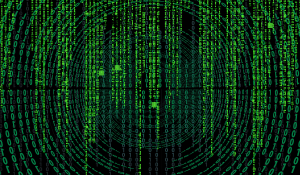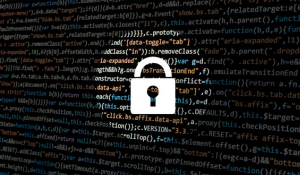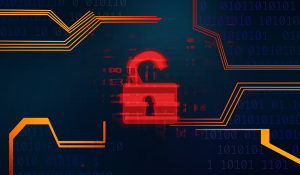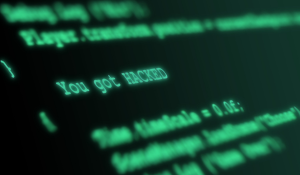From Myth to Malware: The Evolution of Trojan Horse Viruses
In the vast landscape of cybersecurity threats, few adversaries have proven as cunning and adaptable as the Trojan horse virus. Like its namesake...

The threat of malware looms large. From viruses and worms to ransomware and spyware, malicious software poses a significant risk to individuals, businesses, and organizations worldwide. As cybercriminals continue to evolve their tactics, it's crucial to understand the nature and impact of malware.
| TABLE OF CONTENT |
This blog post aims to shed light on different types of malware, explore their modes of operation, and provide insights into effective measures to protect against these insidious cyber threats. By gaining a deeper understanding of malware, we can better fortify our digital defenses and navigate the ever-changing cybersecurity landscape.
Recent data underscores a concerning surge in malware targeting critical sectors across Germany and Austria. Specifically, healthcare, manufacturing, and critical infrastructure enterprises are facing increasingly sophisticated threats. For example, within the healthcare sector, there have been increasing reports of ransomware attacks that critically disrupt hospital operations. Incidents such as those impacting the Catholic Youth Welfare Department of the Diocese of Augsburg (KJF) in 2024, where sensitive financial and patient data was compromised, demonstrate the severe consequences.
Malware, short for malicious software, refers to harmful software or code specifically designed to exploit vulnerabilities or cause damage to computer systems. Cybercriminals use malware to steal sensitive data, manipulate systems, or compromise entire networks. It comes in various forms, including viruses, which embed themselves in legitimate files, worms, which spread independently across systems, and Trojans, which disguise themselves as harmless programs while executing malicious activities. Other threats include spyware, which secretly collects user information, and keyloggers, which record keystrokes to steal login credentials.
Once infiltrated, malware can cause significant harm—from disrupting hospital equipment and operations in the healthcare sector to halting production in manufacturing or threatening critical infrastructure. It can compromise confidential data, corrupt or erase files, shut down essential business processes, or create backdoors that allow attackers unauthorized access to corporate networks.
In the realm of cybersecurity, understanding the different types of malware is essential for recognizing the diverse range of threats that can compromise computer systems and networks. From viruses that replicate and infect files to ransomware that encrypts data for extortion, exploring the various forms of malware sheds light on the distinct characteristics and tactics employed by cybercriminals in their malicious pursuits.
Viruses are malicious programs that can replicate themselves by attaching to other files or programs. They spread when these infected files are shared or executed. Viruses can cause various damage, such as corrupting or deleting files, disrupting system operations, or even rendering a system inoperable.
Computer worms are self-replicating malware that can spread across networks without needing a host file or program. They exploit security vulnerabilities in network protocols, email systems, or operating systems to propagate. Worms can consume network resources, slow down network performance, and carry out other malicious activities.
Trojans, or Trojan viruses, are malware disguised as legitimate or harmless software. Users are tricked into downloading or executing Trojans, which then provide unauthorized access to the attacker. Trojans can create backdoors, capture sensitive information like login credentials, or allow remote control of the infected system.
Ransomware is a type of malware that encrypts a victim's files or locks them out of their own system until a ransom is paid. It typically spreads through malicious email attachments, infected downloads, or by exploiting vulnerabilities. Ransomware attacks can be highly disruptive, affecting individuals, businesses, and even critical infrastructure.
Spyware is designed to covertly gather information about a user or organization without their knowledge or consent. It can monitor activities, capture keystrokes, collect sensitive data, and relay it to the attacker. Spyware is often bundled with legitimate software downloads or distributed through malicious websites.
Adware is a form of malware that displays unwanted advertisements to the user. It is typically bundled with free software and generates revenue for the attacker by displaying intrusive ads or redirecting users to malicious websites. Adware can slow down system performance and compromise user privacy.
Botnets are networks of infected computers, or "bots," that are remotely controlled by an attacker. These bots can be used to launch various attacks, such as distributed denial-of-service (DDoS) attacks, spread spam emails, or participate in other malicious activities without the user's knowledge.
Find out more about different types of cyberattacks:

Malware is designed to remain undetected while achieving its malicious objectives, making it a constant challenge for cybersecurity professionals to detect, prevent, and mitigate its effects. They can vary in their approach and techniques used. However, the steps described below give a general idea of how a typical malware attack may proceed.
Infection: Malware is distributed through various vectors, such as infected email attachments, malicious websites, compromised software downloads, or exploiting vulnerabilities in systems or networks.
Execution: Once the malware is delivered to a target system, it is executed or activated by the user, often unknowingly. This can happen when the user opens an infected file, clicks on a malicious link, or interacts with a compromised program.
Concealment: To avoid detection, malware often employs techniques to hide its presence from the user and security software. It may use rootkits or other methods to hide its processes and files, making it challenging to identify and remove.
Payload: Malware's main objective is its payload - the harmful action it intends to perform. This can include stealing sensitive data, encrypting files for ransom, creating backdoors for remote access, or simply causing disruption to the system.
Propagation: Some malware, like viruses and worms, can self-replicate and spread to other systems. They use various means, such as exploiting network vulnerabilities or utilizing the victim's contact list, to infect more devices and expand their reach.
Communication: Malware often establishes communication with a command-and-control (C&C) server controlled by the attacker. This allows the malware to receive instructions, updates, or deliver stolen data back to the attacker.
Persistence: To ensure longevity, malware attempts to maintain its presence on the infected system. It can create autostart entries, modify system settings, or exploit vulnerabilities to survive system reboots and security software scans.
Evading Detection: Malware continuously evolves to evade detection by security solutions. This can involve polymorphic or metamorphic code, which changes its appearance with each infection, making it harder for traditional signature-based antivirus software to detect.
Exploitation: Malware often leverages software vulnerabilities to gain access to the system or escalate privileges. By exploiting unpatched or outdated software, it can install itself with higher privileges and access critical system components.
Collateral Damage: In some cases, malware may cause unintended collateral damage by disrupting essential services or spreading uncontrollably, impacting both infected and non-infected systems.
One notable real-life malware attack that occurred in 2020 was the "SolarWinds Cyberattack," also known as "Solorigate" or "Sunburst." This attack was a highly sophisticated and widespread supply chain attack that targeted various organizations, including government agencies and private companies.
The SolarWinds Cyberattack was significant due to its scale, sophistication, and the level of access the attackers gained to critical systems and data. It highlighted the importance of supply chain security and the need for organizations to have robust cybersecurity practices in place to detect and mitigate such threats.
Attack Vector:
• The attackers compromised the software update mechanism of a widely used network management software called SolarWinds Orion. They injected malicious code into legitimate software updates released by SolarWinds.
Targets:
• The attackers gained access to thousands of organizations worldwide, including U.S. government agencies such as the Department of Homeland Security, the Department of Defense, and various Fortune 500 companies.
Objectives:
• The primary objective of the attack was espionage, as the attackers sought to steal sensitive information from targeted organizations.
Tactics:
• Once the malicious updates were installed in target organizations, they allowed the attackers to gain a foothold in the victim's network.
• The malware used in this attack, known as "Sunburst" or "Solorigate," was designed to remain stealthy and avoid detection.
• After gaining initial access, the attackers moved laterally within the compromised networks and escalated privileges to access sensitive data.
Discovery:
• The attack was discovered by the cybersecurity company FireEye in December 2020 when they detected suspicious network traffic emanating from their own systems.
• FireEye's investigation led to the identification of the SolarWinds Orion software compromise, and they promptly disclosed their findings to the public.
Attribution:
• While the U.S. government attributed the attack to a state-sponsored Russian hacking group known as APT29 (Cozy Bear), the exact identity and motivation of the attackers remained a subject of ongoing investigation and debate.
Many organizations affected by the SolarWinds attack had to conduct extensive investigations, remediation efforts, and improve their cybersecurity posture to prevent future breaches. This incident serves as a stark reminder of the ever-evolving nature of cyber threats and the need for constant vigilance in the world of cybersecurity.
Protecting against malware requires a multi-layered security approach. In addition to advanced endpoint protection solutions, organizations must implement regular software updates, network segmentation, zero-trust security models, and comprehensive employee training.
Use robust antivirus and anti-malware software: Deploy reputable and up-to-date antivirus and anti-malware solutions across all systems and devices. Regularly update these software programs to ensure they have the latest threat definitions and security patches.
Implement strong access controls and user privileges: Enforce the principle of least privilege and access rights, granting users only the necessary permissions to perform their tasks. Implement strong password policies, multi-factor authentication, and regular password changes to minimize the risk of unauthorized access.
Keep software and systems up to date: Regularly update operating systems, software applications, and firmware with the latest security patches. Vulnerabilities in outdated software versions are often exploited by malware, so implementing timely updates is crucial.
Educate employees about safe practices: Conduct regular cybersecurity awareness training for employees, teaching them how to recognize and avoid phishing emails, suspicious links, and downloads. Encourage a culture of vigilance, where employees understand the risks associated with clicking on unknown links or opening attachments from unfamiliar sources.
Implement a robust backup strategy: Regularly backup critical data and systems to an offline or offsite location. This ensures that if an attack occurs and data is compromised or encrypted by ransomware, you can restore your systems and data from a clean backup.
Enable strong firewalls and network security: Use hardware or software firewalls to filter incoming and outgoing network traffic. Configure firewalls to allow only necessary services and block potentially malicious or unauthorized connections.
Implement web filtering and email security measures: Utilize web filtering solutions to block access to malicious or suspicious websites. Deploy email security measures, including spam filters and email authentication protocols, to detect and prevent phishing emails and other email-based malware attacks.
Regularly conduct vulnerability assessments and penetration testing: Perform periodic vulnerability assessments to identify weaknesses in your systems and networks. Conduct penetration testing to simulate real-world attacks and identify potential entry points for malware.
Monitor and analyze network traffic: Deploy intrusion detection and prevention systems (IDS/IPS) and security information and event management (SIEM) solutions to monitor network traffic and detect potential signs of malware activity. Promptly investigate and respond to any detected anomalies.
Establish an incident response plan: Develop and regularly update an incident response plan that outlines the steps to be taken in the event of a malware attack. This should include procedures for isolating infected systems, notifying stakeholders, and restoring operations as quickly as possible.
Especially in high-risk industries like healthcare and manufacturing, even a single malware infection can have severe consequences. Therefore, businesses must not only strengthen their technical defenses but also continuously raise awareness among employees to effectively mitigate the risks posed by malware.
Malware attacks are becoming increasingly sophisticated, targeting vulnerabilities in our systems and exploiting human error. But there's a proactive approach to safeguarding your data. DriveLock IT-Security Solutions provide a multi-layered defense that directly addresses the common attack vectors we've discussed.
DriveLock's Application Control acts as a powerful gatekeeper, implementing a robust whitelisting and blacklisting strategy. Instead of relying solely on signature-based detection, which can be bypassed by zero-day threats, DriveLock focuses on allowing only trusted applications to run.
DriveLock's Device Control tackles this threat head-on. By automatically encrypting USB drives and controlling access based on defined policies, DriveLock ensures that sensitive data remains protected, even if a device is lost or stolen.
DriveLock's Detection & Response capabilities go beyond traditional antivirus solutions. By continuously monitoring system behavior and analyzing data for suspicious patterns, DriveLock can identify potential threats that might otherwise go unnoticed.
It's clear that malware remains a persistent and evolving threat in today's digital landscape. Organizations of all sizes must prioritize cybersecurity to safeguard their valuable data and maintain the trust of their customers and partners. Vigilance, employee training, and robust cybersecurity measures are essential components of a comprehensive defense strategy against malware attacks.
But with a proactive approach and a commitment to cybersecurity best practices, your organization can stay one step ahead of cybercriminals and keep your digital assets safe from harm. Regularly backing up your data, implementing strong access controls, and maintaining up-to-date antivirus software can go a long way in preventing malware from infiltrating your organization.
Strengthen your cybersecurity with our solutions based on the Zero Trust model. You can try them free of charge and without obligation for 30 days. Sing up for a free trial below!

In the vast landscape of cybersecurity threats, few adversaries have proven as cunning and adaptable as the Trojan horse virus. Like its namesake...

In this relentless digital battlefield, businesses and organizations are pitted against a multitude of adversaries ranging from individual hackers...

Among the numerous cyber threats lurking on the horizon, phishing attacks have emerged as a formidable adversary. Like a stealthy predator, these...